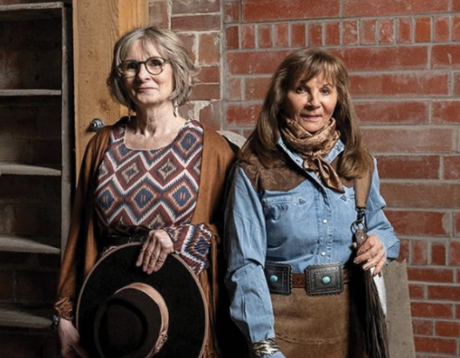Alberta’s surging wild horse population has ranchers pushing the province to lift the temporary suspension of its selective slaughter program.
The latest count shows a 25 per cent year-over-year increase in the animals since public outcry halted the annual cull last year.
“It’s concerning,” said Sundre-area cattle rancher Jim Bowhay, who fears feral horses will overrun neighbouring pastures and invade his rangeland.
Bowhay already estimates paying up to $30,000 a year in extra costs related to wildlife grazing on grass intended for his livestock.
“Give it two or three years,” Bowhay said. “They grow in a hurry.
“That’s our livelihood, it ups our cost of production — it makes it tough.”
But this puts him at odds with an advocacy group seeking greater protection for the animals under the designation of a heritage breed.
In a letter to the Herald, the Wild Horses of Alberta Society said the animals have been falsely accused of damaging the west country, and actually provide “a net benefit (to) their habitat by being natural seeders and foragers.”
The group was asked by the government to partake in this year’s aerial horse count at the end of March.
Afterwards, it reported 853 horses were spotted within a 8,500-square-kilometre stretch from Kananaskis Country north to the Ram River and west of Sundre to Eagle Lake.
It was the second-highest tally in the past six years, but still “far, far too few,” according to society members who suggest that populations of less than 150 are unsustainable.
Free-roaming equines have endured since being left behind by European settlers. Because they’re not native to North America, the provincial government distinguishes between feral horses and abandoned farm animals or escapees.
The province has issued capture permits as part of a growth management plan. And while it doesn’t track what happens after the horses are captured, it’s likely many are sent to slaughter and processed for export, while others are used on ranches or for rodeo stock.
In 2011-2012, 216 horses were rounded up, a more than 600 per cent increase from the previous five-year average. The sharp spike sparked the public backlash leading up to this year’s temporary suspension.
Seeing the results, the wild horse society is now calling for a three-year ban on trapping licences to recover from “devastating culls of prior years.”
Rick Erismann questioned that idea.
“Who’s benefiting? Why do you want so many wild horses running around?” asked Erismann, who owns Diamond Buffalo Guest Ranch near Sundre.
He pointed to a situation in 1994 in which 1,200 horses were rounded up at CFB Suffield because they were damaging a fragile ecosystem after roaming the southeastern Alberta military base for 50 years.
“If they’re not culled and managed, they’re going to become an issue,” Erismann said.
Alberta Environment and Sustainable Resource Development is reviewing solicited feedback and hasn’t yet decided whether to issue capture permits next year.
“We recognize this is an emotional topic for many people,” department spokeswoman Jessica Potter said. “But we share the same goals.
“We want a healthy and sustainable population of horses on our landscape.”
Source: Edmonton Journal















